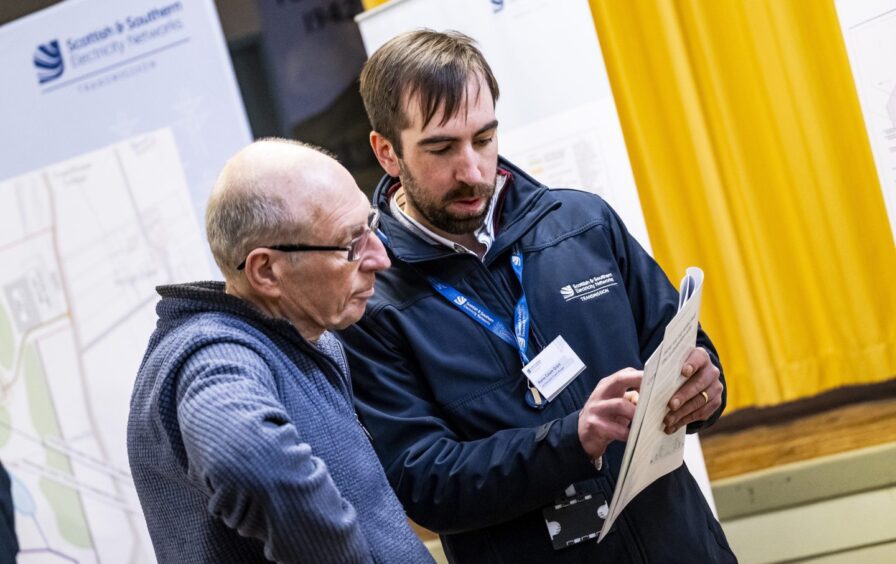
SSEN Transmission has refined the route for its Kintore to Tealing 400kV power line despite calls for it to ditch its overhead design.
The paths for six sections of the power line were debated in a series of consultations with local communities and stakeholders between March and April 2024.
Concerns were raised during the consultations about the visual impacts of the routes, as well as the effects they could have on the environment.
SSEN said that several of the proposed route options and refinements had been chosen to avoid summits of hills and steep ground and will move to the next stage of development.
However, chairman of anti-pylon group Deeside Against Pylons John Rahtz said: “My concerns are about the basic technical solution they’ve chosen, as opposed to just the route.”
He argued that there are no refinements to the overhead design chosen by SSEN Transmission that will reduce its impact.
“These things are enormous and you can’t hide them behind a hedge or put them against the tree line or behind a hill,” he said.
Feedback on potential overhead line alignments will be sought from community members and other stakeholders at the next series of public consultation events for the project, which are scheduled to take place in September and October.
Rahtz advocated for rethinking the design entirely, in favour of a “subsea link, and take all the power down the east coast, but not drive it through the centre of Scotland.
“The prime objection is the visual impact, and the mess it makes of the environment. SSEN should have considered a different form of technology, which is perfectly viable everywhere else in the world.”
The Kintore to Tealing power line aims to reinforce the transmission system as additional renewable capacity is brought online in the coming years.
In addition to the power line, the project will require two new 400kV substations to be constructed, one at Fetteresso Forest, known as Hurlie, and one north of Dundee near Tealing, known as Emmock.
The Hurlie substation was chosen after SSEN Transmission decided against developing a new substation at Fiddes in the Mearns.
Construction is expected to be completed and the power line energised in 2030.
Senior development project manager for the Kintore-Tealing project Calum Grant said: “As we work to deliver the critical national infrastructure that is required to deliver energy security and net zero, we’ve been undertaking one of the biggest public consultations that Scotland has ever seen.
“The feedback and local insight that we’ve received so far has been invaluable and has already led to major changes being made to our plans.
SSEN also received a boost to its transmission plans as Scottish Ministers consented the Creag Dhubh-Dalmally 275kV overhead line.
The project had previously received an objection to the project from Argyll and Bute Council’s Planning, Protective Services and Licensing Committee.
The project is part of SSEN’s planned upgrades the electricity transmission network across Argyll and Kintyre from 132kV to 275kV. The upgrades are part of the company’s £20bn Pathway to 2030 programme.
Grant added: “As we publish our latest report on consultation, summarising feedback and decisions taken following the March and April engagement events, we can confirm we are taking community and landowner led alternative proposals around Careston, Drumoak and Echt to the next round of consultation, which will take place next month.
“We would encourage anyone who has an interest in the Kintore to Tealing project to come along to these events to provide their feedback, which will be carefully considered as we continue to refine our plans.”
Recommended for you

